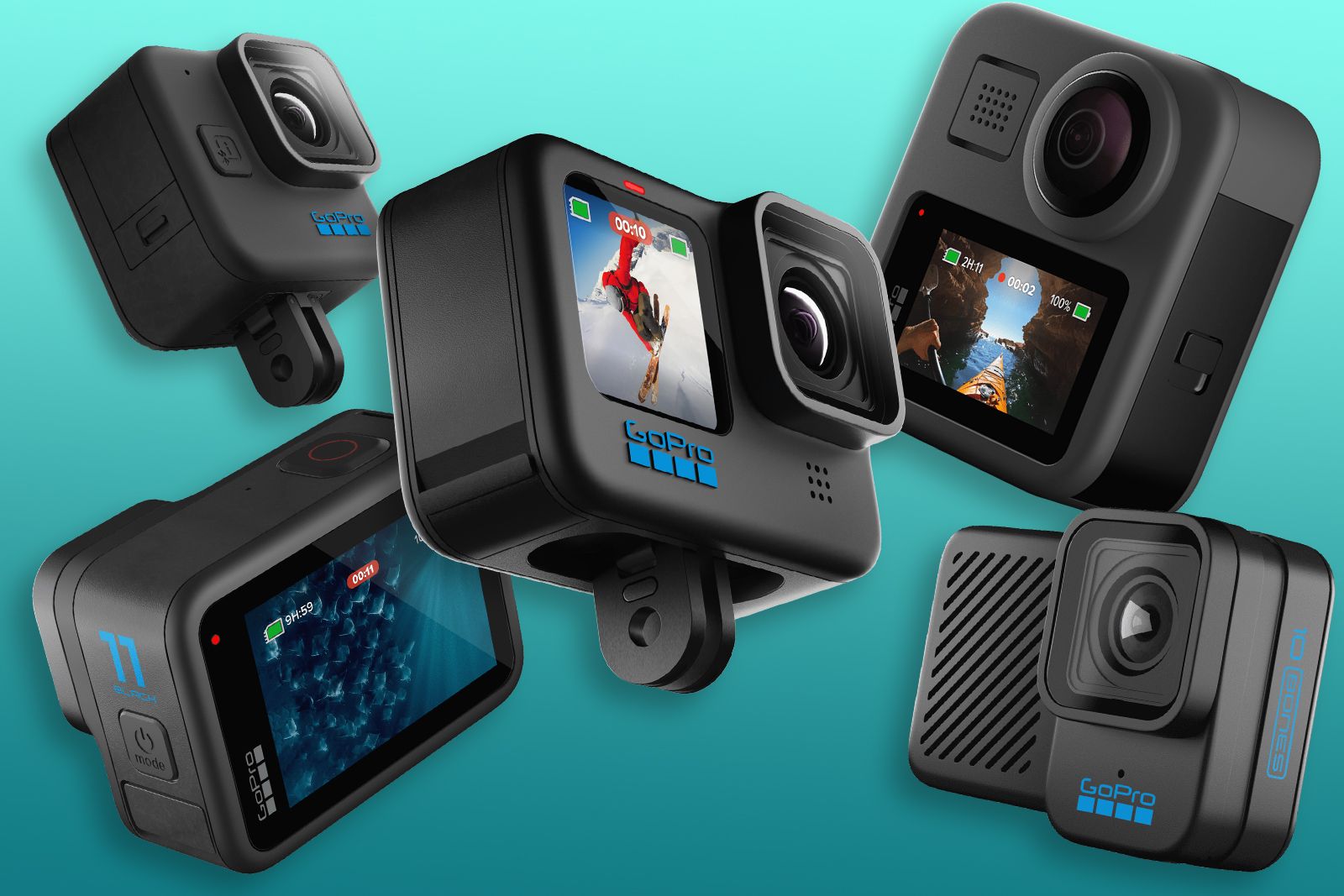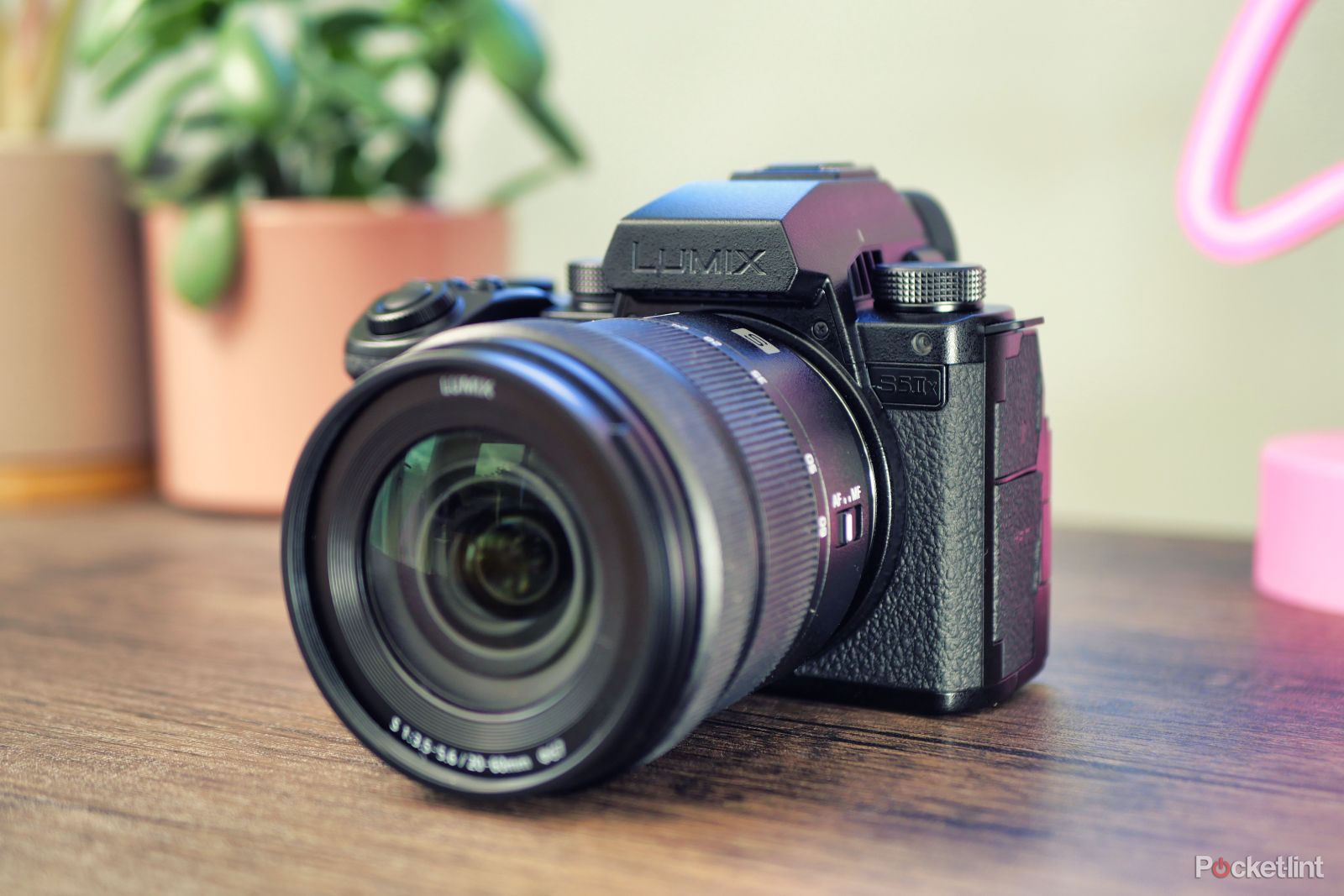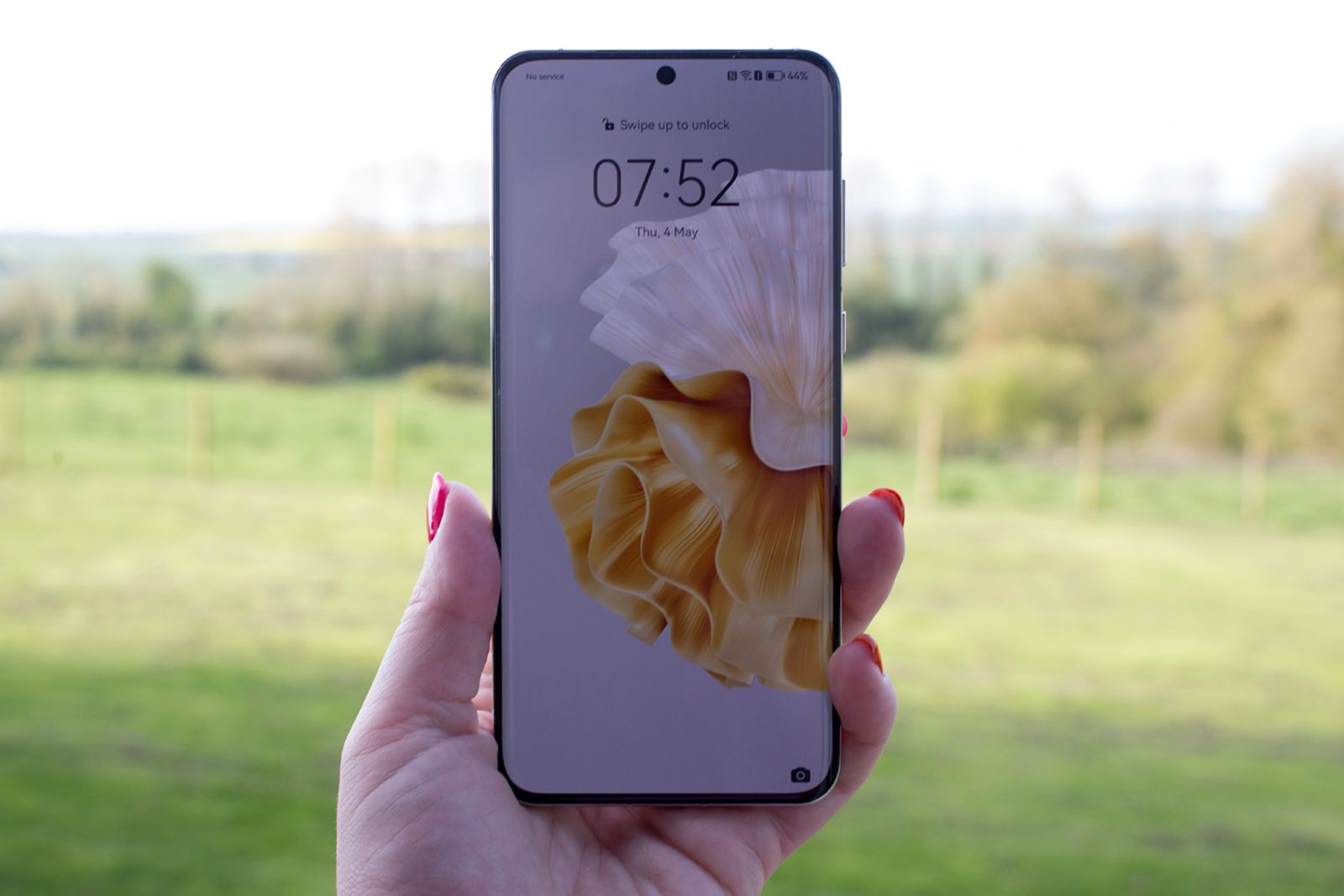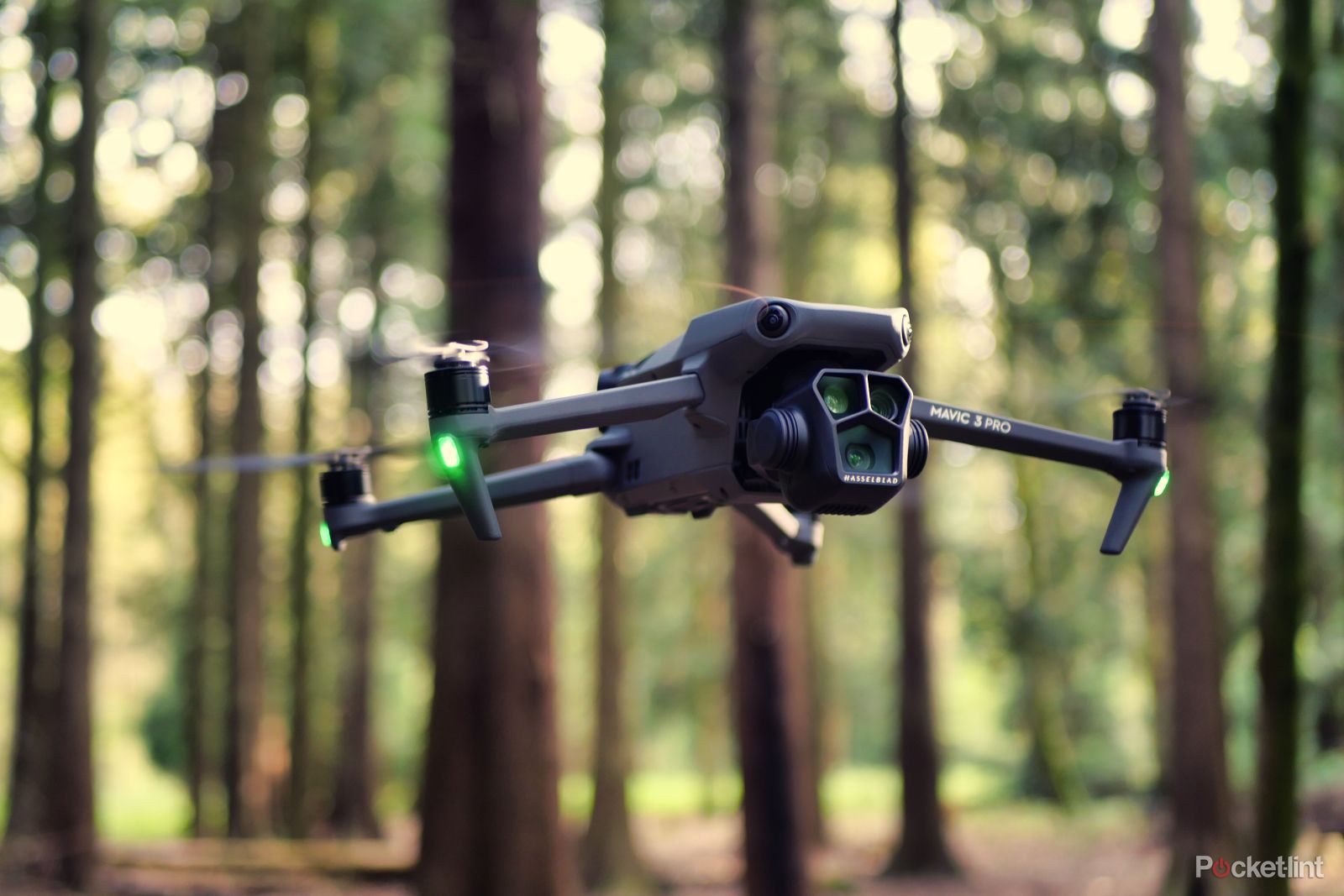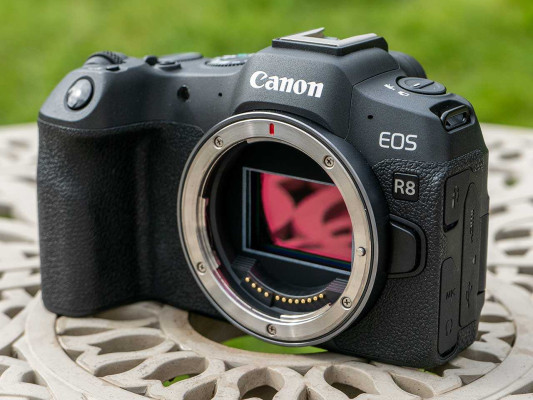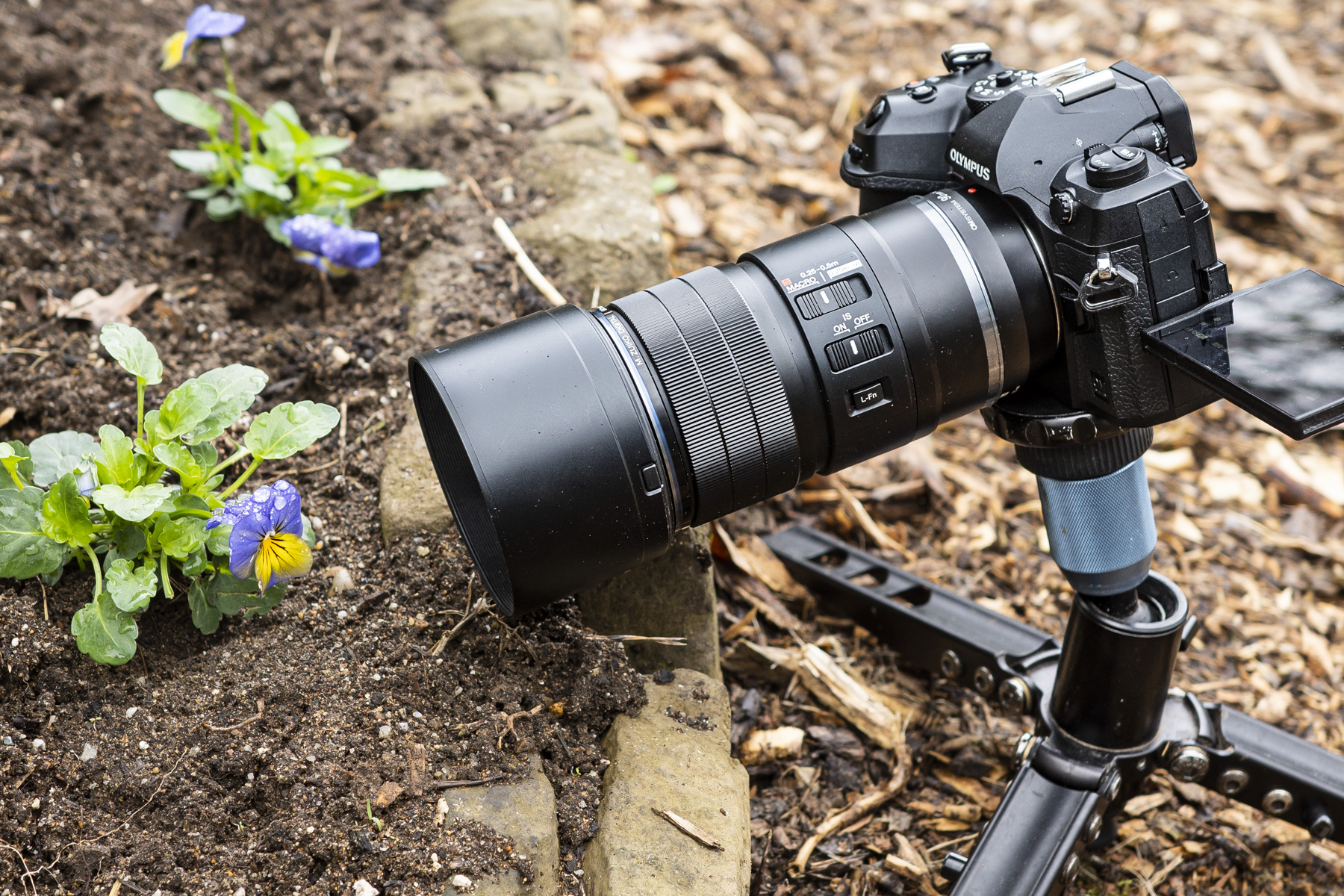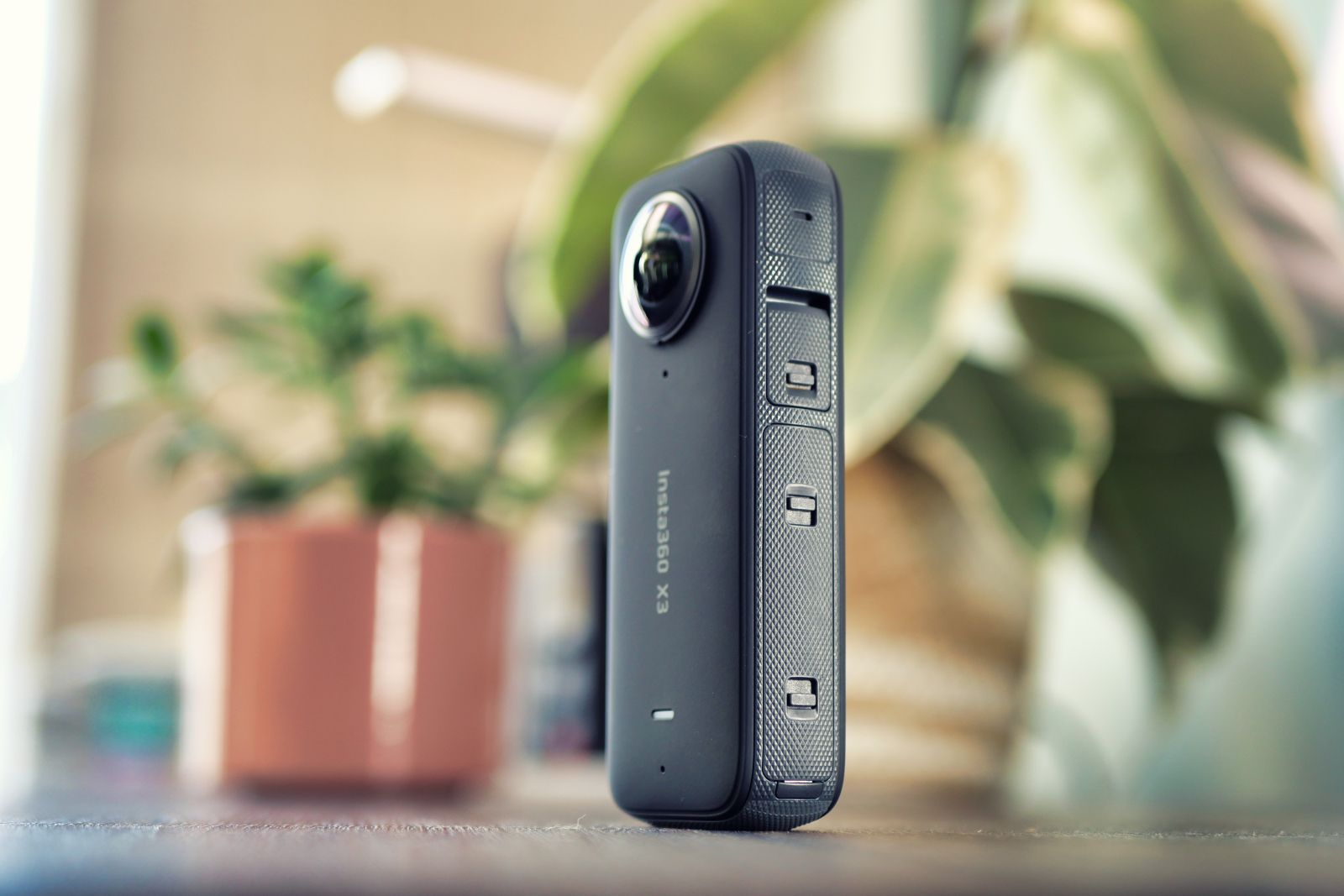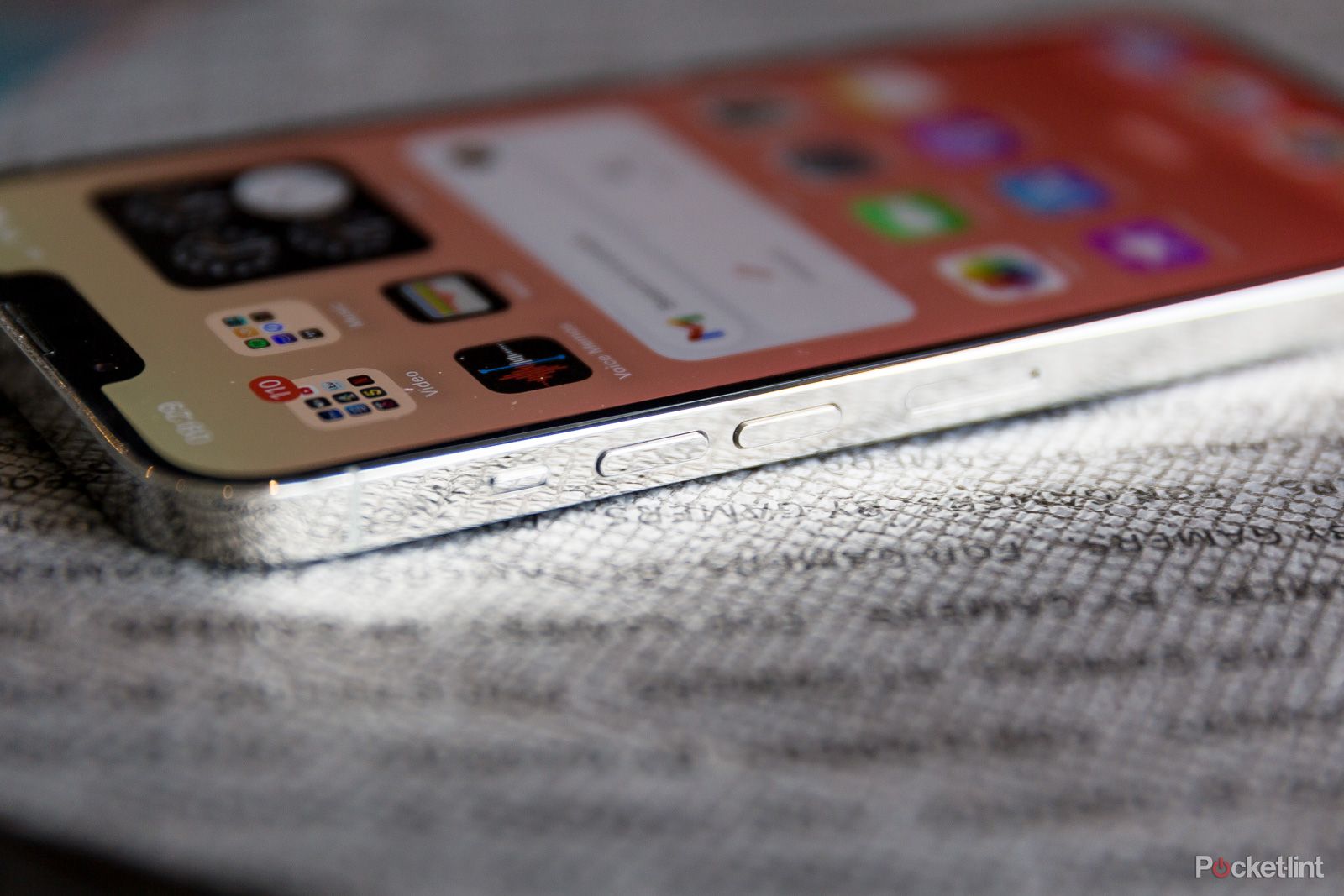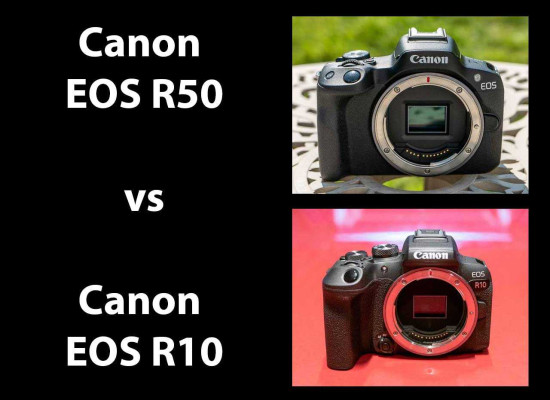Reviews

Nikon Z8 preview
DPReview Latest |
Product photos by Richard Butler
Nikon has announced the Z8, a mid-sized high-end full frame mirrorless camera built around the same sensor and processor as the range-topping Z9 sports camera. The Z8 offers the majority of the same features but in a smaller body.
Key specifications
- 45.7MP Stacked CMOS sensor
- Up to 20fps with Raw, 30fps full-sized JPEG
- Pre-burst capture in JPEG modes (up to 120fps for 11MP crops)
- Subject recognition AF and 3D Tracking
- Synchro VR combining in-body and in-lens stabilization, rated at up to 6EV
- 8K/60p video in N-Raw, 4.1K in ProRes Raw
- 8K/30p or up to 4K/60p from 8K
- Choice of ProRes 422 HQ, H265, H.264
- N-Log or HLG capture
- 3.68M dot EVF with dedicated low-lag sensor feed
- 2.1M dot screen on two-way hinge
- One CFexpress Type B, One UHS II SD slot
- Dual USB-C ports
The Nikon Z8 will be available from late May with a recommended price of $3999.
Jump to:
What's new | How it compares | Body & handling | Initial impressions | Sample gallery I Specifications | Press release
What's new
 |
In almost every respect, the Z8 is a match for the Z9, with essentially all the larger camera's features and capabilities duplicated in a smaller body.
At the heart of it all is the same 47.5MP Stacked CMOS sensor that has parallel readout paths, one for images or video and another to provide the viewfinder feed with minimal lag.
This means it can match the Z9's 20fps shooting rate with Raw and its 30fps full-frame / 60fps APS-C / 120fps 11MP JPEG shooting modes. The Z8 also provides the option to shoot 10-bit HEIF files (alongside Raw, if you wish), if you opt to capture HDR images using the HLG curve.
The Z8 also offers the pre-burst option that lets it start capturing images when the shutter is half-pressed, then record up to a second's worth of images when you fully press the shutter. This is available in the 30, 60 and 120fps JPEG modes.
We're told the Z8 has the same buffer as the Z9, meaning it can record more than 1000 JPEGs or HE* compressed Raws at 20fps. 685 of the less compressed HE Raws can be captured in a burst, or 79 of the losslessly compressed Raws files.
Like the Z9, with its fast (~1/280sec) readout, the Z8 has no mechanical shutter. It does have a shutter shield mechanism that can be set to close when the camera is off, though, to prevent dust ingress when you change lenses.
Video
In terms of video the Z8 can capture 8K/30p video in the ProRes 422 HQ, H.265 or H.264 formats, or 8K/60p in the N-Raw format. 4K video can be shot at up to 120fps (subsampled), or with oversampled footage derived from 8K capture at up to 60p.
| Resolution options | Bit depth | Options | ||
|---|---|---|---|---|
| N-Raw | 8K/60p 4.1K/120p (sub-sampled) 5.4K/60p (APS-C) 4K/120p (2.3x crop) |
12-bit | SDR N-Log |
Bayer |
| ProRes RAW HQ | 4.1K/60p (sub-sampled) 5.4K/30p (APS-C) |
12-bit | SDR N-Log |
Bayer |
| ProRes 422 HQ | 4K/60p 1080/120p |
10-bit | SDR N-Log |
4:2:2 |
| H.265 | 8K/30p 4K/120p (sub-sampled) 4K/60p (from 8K) 1080/120p |
10-bit or 8-bit | SDR HDR (HLG) N-Log |
4:2:0 |
| H.264 | 1080/60p | 8-bit | SDR | 4:2:0 |
The only major difference is that the Z8 can only record for up to 90 minutes, rather than the 125 minutes offered by the Z9, presumably for reasons of heat build-up.
Like the Z9, the camera uses a base ISO of 200 in video mode for its standard color modes. Switch to HLG and the base state becomes ISO 400, encouraging the use of one stop less exposure to ensure that an additional stop of highlights isretained. N-Log has a minimum of ISO 800, to capture and retain an extra two stops of highlights.
Dedicated airplane subject detection mode
The Z9 could already detect aircraft as part of its vehicle detection mode, but on the Z8 it has been separated out into its own selectable mode. Nikon says separating airplane from general vehicle tracking results in improved tracking accuracy. We've had no confirmation from Nikon but we'd be surprised if we don't see a similar feature added to the Z9 in future firmware.
Battery grip
For users concerned about the battery life offered by the Z8's smaller EN-EL15c battery, there will be an optional battery grip that provides capacity for two EN-EL15s. As with the grip for the Z6 II and Z7 II, the grip will displace the internal battery, meaning you get two batteries in total, not three.
How it compares
The price tag of $4000 puts the Z8 in direct competition with the Canon EOS R5, and it doesn't look at all bad in comparison. It's priced somewhere around the cost of the Sony a9 II but its high resolution means it has more in common with Sony's more expensive a1.
| Nikon Z8 | Canon EOS R5 | Sony a1 | Nikon Z7 II | |
|---|---|---|---|---|
| MSRP | $4000 | $3899 | $6500 | $3000 |
| Pixel count | 45.7MP | 45MP | 50MP | 45.7MP |
| Sensor type | Stacked CMOS | FSI CMOS | Stacked CMOS | BSI CMOS |
| Image stabilization | In-body + in-lens* | In-body + in-lens* | In-body* | In-body* |
| Max burst rate | 20 fps Raw 30fps JPEG |
12fps (mech shutter) 20fps (elec shutter) |
30 fps (lossy Raw) 20 fps (lossless Raw) |
9 fps |
| Readout rate | ∼1/270 | ∼1/60* | ∼1/260 | ∼1/16 |
| High-res mode | No | 9-shot JPEG only | 4 or 16-shot, combined on PC | No |
| Viewfinder res / mag | 3.68M dots / 0.8x |
5.76M dots / 0.76x | 9.4M dots / 0.9x | 3.68M dots / 0.8x |
| Rear screen | 3.2", 2.1M-dot two-way tilting touchscreen | 3.2", 2.1M-dot articulating touchscreen | 3.0", 1.44M-dot tilting touchscreen | 3.2", 2.1M-dot tilting touchscreen |
| Top-plate display | Yes (OLED) | Yes (OLED) | No | Yes (OLED) |
| Video capabilities | Up to DCI 8K/30p (full width), 8K/60p N-Raw, 4K/120 | Up to DCI 8K/30p (full width), 4K/120 | Up to UHD 8K/30p (full-width). | UHD 4K 30p (Full width pixel-binned or oversampled APS-C) |
| Log video | N-Log, HLG, 4:2:2 10-bit | HDR PQ, Canon Log, 4:2:2 10-bit | S-Log 2, S-Log 3, HLG (10-bit) | N-Log over HDMI only (10-bit) |
| Ethernet socket | No | Via optional WFT grip | Yes | No |
| USB socket(s) | 2x USB-C | USB-C | USB-C | USB-C |
| Battery life (LCD/EVF) |
340 / 330 | 490 / 320 | 530 / 430 | 420 / 360 |
| Card slots | 1 CFe Type B/XQD, 1 UHS II SD | 1 CFe Type B, 1 UHS II SD | 2 CFe Type A / UHS II SD | 1 CFe Type B/XQD, 1 UHS II SD |
| Size | 144 x 119 x 83 mm | 138 x 98 x 88 mm | 129 x 96 x 78 mm | 134 x 101 x 68 mm |
| Weight | 910 g | 738 g | 665 g | 675 g |
On paper, the Z8 doesn't look particularly impressive in this company. Its specs look a lot like those of the EOS R5, with its viewfinder seemingly leaving it lagging behind. The reality couldn't be more different: the Z8's viewfinder's minimal lag makes it feel more lifelike and better suited for shooting action, while its shooting rate is significantly faster and its quicker sensor readout means there's less rolling shutter in e-shutter mode. Its AF is some of the best we've encountered, and the Nikon has the edge in video with longer recording times and a wider selection of capture modes and codecs.
Body and handling
 |
The Z8 is significantly smaller than the Z9 but is still a pretty substantial camera. Its form factor has more in common with the D850 DSLR than the existing Z6 and Z7 models. Despite the use of magnesium alloy and carbon fiber, the body is appreciably heavier than those models, too. Nikon says it's weather sealed to the same degree as the Z9.
The grip is very similar to the one on the D850 and the dials very similarly placed, meaning it will feel immediately familiar to existing Nikon users. There's a well-positioned AF joystick on the back of the camera and a variety of customizable buttons, including the now-standard pair of function buttons next to the lens mount on the front of the camera.
On the camera's left shoulder is the control binnacle that's been common to high-end Nikons dating back more than two decades.
 |
| The Z8 has Nikon's 10-pin accessory port but also an AF mode button, visible towards the bottom of this image. |
Like the Z9, the Z8 has an AF mode button on its lower left front, just where the traditional MF/AF-S/AF-C switch was on the company's DSLRs. Holding the button and nudging the front dial changes the AF drive mode whereas spinning the rear dial changes AF area mode.
The Z8 has the same viewfinder as the Z9, which means a rather low-sounding 3.69M dots (1280 x 960px). However, the low-lag feed delivered from the parallel readout design of the Stacked CMOS chip means it gives one of the most responsive, lifelike viewfinder experiences we've yet had.
 |
The Z8 becomes the first camera we've seen to include a pair of USB-C ports. This allows the use of one port for tethering or data transfer while the other is reserved for charging or powering the camera.
 |
The smaller body is in part made possible by the use of a smaller battery. In this case it's the same EN-EL15c that's used by most of Nikon's mirrorless cameras. It's a 16Wh unit, meaning it's around half the capacity of the battery used in the Z9. This sees the camera deliver CIPA ratings of 340 shots per charge, if you use the rear LCD, and 330 if you use the viewfinder. Turn on energy saving mode and these figures rise to 370 and 340 shots per charge, respectively.
Initial impressions
 |
The Z9 is one of the most impressive cameras I've ever used, and the Z8 is essentially the same camera but in a body I might be able to carry around and at a price that I could reach with the sale of fewer internal organs. All good then, yeah? Gold award and we all go home happy?
It's not quite that simple. Yes, the Z8 offers a very impressive spec and, like the Z9, backs it up by delivering that spec: no nasty rolling shutter surprises in e-shutter mode, no dropping to 12-bit readout when shooting bursts. If anything, the Z8 and Z9 out-perform their specifications by providing such a responsive viewfinder experience, despite the seemingly middling resolution of the EVF panel.
But while the Z8 is hugely capable, and aggressively priced for what it does, it's still hitting the market for $700 more than the Nikon D850 did, at launch. So what do D850 users get for that 20% premium?
What we wouldn't expect is for them to get a significant improvement in image quality over their current camera. From what we saw in the Z9, the 45.7MP Stacked CMOS sensor appears to be an evolution of the BSI chip in the D850, so any IQ improvements are likely to come from the ability to use the newer Z-mount lenses. Synchro VR, which delivers up to 6.0EV of correction (per testing to the CIPA standard) should also help deliver maximum detail more often.
 |
But what anyone upgrading from the D850 will certainly get is a faster camera with a much more advanced AF system, with points that range much further across the frame. So if you're a wildlife shooter or wedding photographer, for instance, the Z8 will shoot much faster, nail the shot more often, and provide options such as pre-burst to make sure you get the critical moment.
Similarly, wedding and event photographers who are expected to capture video as well as stills will find the Z8 a much more supportive companion. Even if you don't use its most advanced video modes (and it joins the Z9 in being arguably the best-specced hybrid camera on the market, at the moment), it has a series of refinements, such as a full-sized HDMI port and the option to capture flexible 10-bit Log footage internally, that haven't been available on Nikon's smaller models before.
Landscape shooters might not be so readily won over by these capabilities, and may feel that, say, a Z7 II delivers just as much, if you don't need the Z8's out-and-out performance speeds.
But, to be blunt, my initial impression of the Z8 was 'what more would anyone need?' It's a sentiment that has a habit of being out-paced by technology's continued improvement, but the all-round capability of the Z8 is hard to argue with. The fact that its specs compare favorably not just with the Canon EOS R5 but also the pro-priced Sony a1 says a lot.
I'm sure there'll be some disquiet about the use of non-matching memory card formats and, perhaps, some griping about the viewfinder resolution by people who've not had a chance to experience it. But if those are the biggest concerns about the Z8, then I'd argue that Nikon's done an impressive job.
Sample gallery
Please do not reproduce any of these images on a website or any newsletter/magazine without prior permission (see our copyright page). We make the originals available for private users to download to their own machines for personal examination or printing (in conjunction with this review); we do so in good faith, so please don't abuse it.
All images shot using a pre-production Nikon Z8








